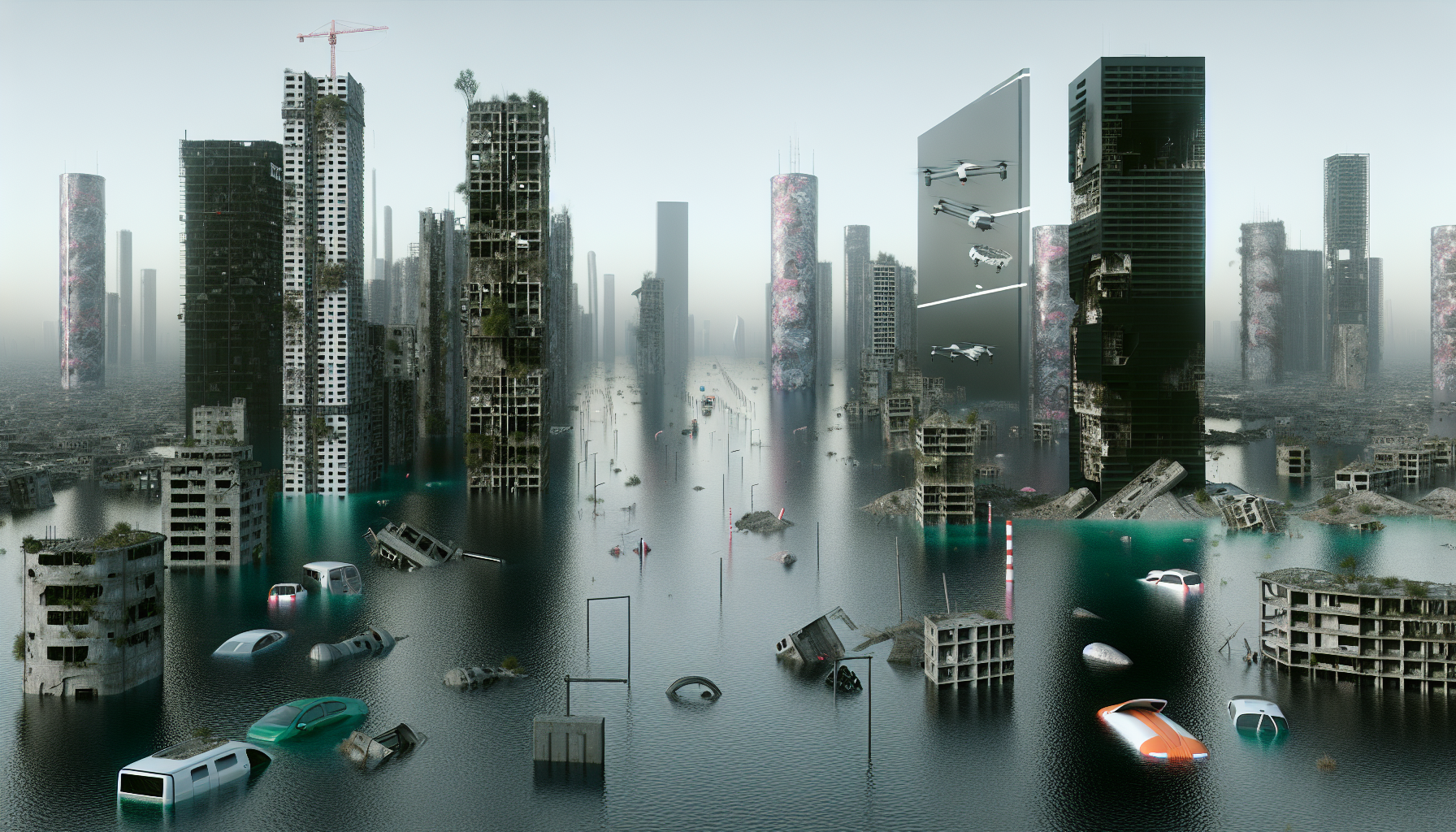In a desolate reverie, humanity awakens to the slosh of tidal sorrow and somber sky. ‘Where We Drown in Silence’ is not the title of an apocalyptic novel; it is the day-to-day autobiography of our once-thriving civilization. Skyscrapers, the great titans of human triumph, now bow to the relentless might of inundating seas, a cruel testament to the hubris that dared challenge the elements.
The reflections in the water are not just of the dilapidated monuments of our past, but of our very ethos, submerged in murky depths. The urban spectacles that once bustled with life are now silent, save for the occasional ripple of water disrupting the haunting stillness. Fish dart through the flooded boulevards of New York, sharks inhabit the submerged subway stations, and across the world, a new aquatic tapestry is weaved into the remnants of our metropolises turned marine graves.
The echoes of alarm were many, but who heeded these cries when they were muffled by the cacophony of endless consumption and disregard for a future that was closer than we dared imagine? Previous articles chronicled the onset of this deluge and warned of the failure of our technological arcs-that-never-came, and the ensuing despair that wept like the persistent rain on the surface of our newfound oceans.
Let us wade through this waterlogged despair and dive into the heart of a drowned world. In the ruins of Venice, where water has been a lifelong companion turned conqueror, the residents have adapted gondolas for their daily commute. Yet, their unmistakable forlorn gazes reflect a profound loss – the death of their city’s soul.
The desperation for a solution to this catastrophe has waned; replaced by an acceptance of a new, brutal normal. Where floating markets have now claimed the spots of once famous landmarks, the resilience of humanity shines through, though it’s a resilience marked by bitterness and resignation.
Alas, the silence is not just physical. It is a metaphor for the muted efforts and ignored warnings that could have forestalled this fate. Our cultural legacies, now underwater museums, are attended by no one – save for the marine creatures that patrol the corridors, indifferent to the history and artistry that gasps for air within encased displays.
Communities have sprouted on the fringes of these newfrontiers, on stilts or atop the skeletal frames of skyscrapers, designing a life amidst the aquatic takeover. Yet, their innovations serve as makeshift rafts, buoying them over a problem too immense to overcome. They fish from their windows, they collect rainwater to drink, but the core of their existence is a tale of survival, not living.
We, the silent witnesses, do not cry out in hope for redemption. There is a shared, unspoken understanding that the world we once knew is irretrievable. This tale serves as an elegy to the Earth we cherished and a final acceptance that our warnings were the very requiem of our survival. Silent now, we can only reflect on what was, what could have been, and prepare for the inevitable rises yet to come.
And as our once-great institutions lie entombed in water, we must ask – do we continue to be silent participants in this watery grave? Or will we finally find our voice, however faint it may be, to echo in the halls of this sunken world?
